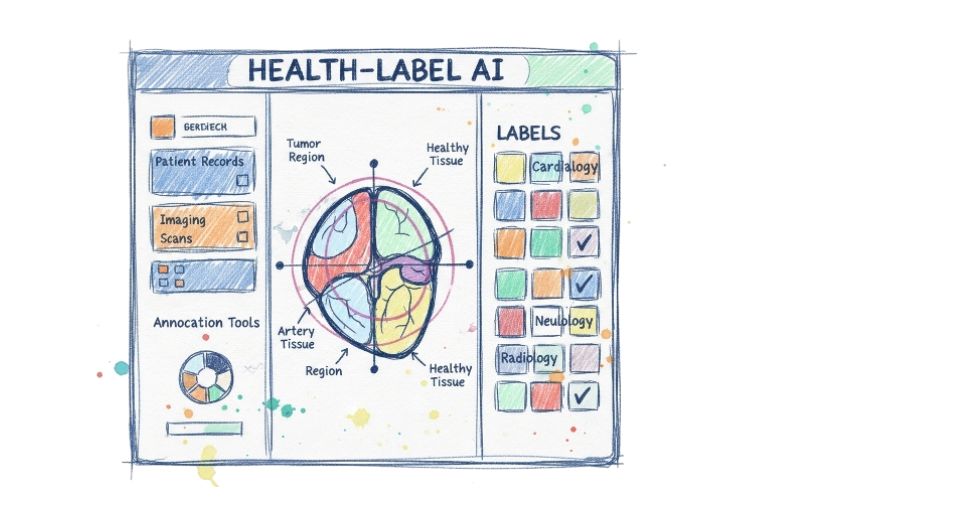
Sep 30, 2025

Metastat Insight global Data Labeling Software market analysis reveals a rapidly changing machine learning and artificial intelligence solutions space. Companies and tech innovators increasingly depend on authentic, formatted sets of data to fuel predictive models, drive more automation, and enable decision-making activities. Across industries from autonomous cars to medical diagnostics, there has been growing demand for accurate, high-speed data labeling technology to respond to the general trend toward smart systems sensitive to real-world complexity. Data labeling technology's contribution to making credible AI outputs has put the market in clearer view, with organizations looking for products that maximize quality and speed in preparing datasets.
Organizations in various industries are being challenged with growing difficulties in handling the amount and variability of unstructured data being produced on a daily basis. Manual labeling processes normally lead to inconsistency and delayed turnaround time, all of which work against the derivation of machine learning outcomes. At the same time, mounting pressures to hasten AI development have set up growing demand for reducing error and enhancing annotation efficiency. Data Labeling Software offers step-through environments forstructuring, annotating, and verifying datasets, offering an end-to-end solution that eliminates these bottlenecks. Simplifying tedious tasks and incorporating quality assurance processes into the workflow, the marketplace offers real data readiness benefits, which enable AI projects to move forward with greater accuracy and confidence.
Data labeling tools make intricate processes easier to handle, enabling teams to label image, text, audio, and video datasets with relevant metadata. AI-assisted labeling and pre-trained models, which do it automatically, provide speed without compromising on accuracy. Multi-data format support and collaboration platforms make room for large-scale projects to move forward smoothly.
The performance gain benefits go far beyond operational effectiveness; stable and correct tags enhance the robustness of forecasting models to deliver consistent results further downstream to actionable output by AI systems. Uses range from autonomous vehicle sensor perception computer programs and medical imaging diagnostic software to language processing algorithms, attesting to the significance of the software in enabling more intelligent, data-based decisions.
Market evolution has progressed from manual, labor-intensive annotation workflows to technologies with partially automated and fully automated tools. Early mover activity was directed toward niche markets, but advancements in machine learning and cloud collaboration have made it possible to open up to larger markets. Incremental additions, such as integration into model training pipelines, enhanced user interfaces, and real-time validation tools, have stabilized adoption and lowered the barriers that were part of dataset preparation. The move from point tools to scalable platforms is a reflection on how advanced the technology has become in meeting more complexity in AI workflows.
Adoption is highest in Europe and North America, where concentration of AI research centers, technology firms, and enterprise-level machine learning initiatives is high and thus the demand is continuous. The Asia-Pacific region is becoming an active growth region because of expanding investments in smart manufacturing, autonomous mobility, and digital services. Increased digital infrastructures, along with growing focus on AI innovation from the emerging economies, reflects underlying potential for faster market penetration. Interregional collaboration and availability of multilingual datasets also fuel Data Labeling Software program development worldwide.
The market faces threats from high initial installation costs, stringent data privacy laws, and open-source competition. Scaling up the quality of annotations, especially for more complex multimodal data, is a persistent challenge. Opportunity is forged by innovation in artificial intelligence-powered labeling, edge computing, and integration with more end-to-end enterprise-wide data management platforms.
Partnerships with cloud infrastructure and AI platform vendors create avenues for expansion, and expansion into specialized verticals like healthcare, retail, and autonomous systems demonstrates the worth of data labeling solutions. Relevance in Present Context Data Labeling Software aligns with broader digital transformation trends, AI adoption, and operational effectiveness.
In fact, annotated datasets are the building blocks for developing AI systems that enhance safety, better health outcomes, and optimized use of resources across sectors. With companies struggling with data complexity, innovation speed, and sustainability issues, powerful labeling solutions make scalable, uniform, and morally compliant AI deployments possible. Global Data Labeling Software market trends by Metastat Insight are targeted at the market as the center in creating the next generation of intelligent technologies, emphasizing its role as a standard-setter in industries and a shaper of future paths of technology.
Drop us an email at:
Call us on:
+1 5186502376
+91 73850 57479